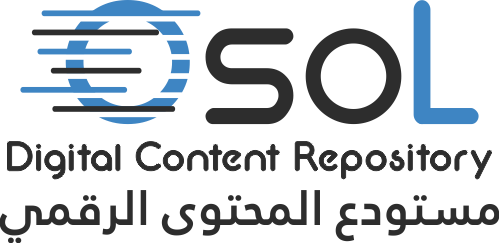Please use this identifier to cite or link to this item:
https://dspace.qou.edu/handle/194/2705| Title: | The Role of TVET in Capacitating Graduates according to Palestinian Labor Market Needs: Institutions of Vocational and Technical Education in Ramallah Governorate as a Model". |
| Authors: | رائد محمد خالد أبوبها |
| Issue Date: | 2022 |
| Publisher: | جامعة القدس المفتوحة/Al-Quds Open University |
| Abstract: | This study aims to identify the role of technical and vocational education and training (TVET) in capacitating graduates in line with the Palestinian labor market needs and to examine the extent to which the outputs of TVET are compatible with the labor market needs. The study considers multiple variables, the most important of which are: (gender, educational institution, and specialization). Additionally, the study identifies the relationship between TVET and the qualification of graduates according to the labor market needs. To achieve the study objectives, a descriptive-analytical approach was used. A questionnaire was distributed to the study target group which consisted of (1732) 2020 graduates of TVET institutions in Ramallah and Al-Bireh governorate. The questionnaire was distributed among all respondents in coordination with alumni units in colleges and centers through e-mail and alumni WhatsApp groups. A total of 704 graduates responded to the questionnaire, representing 40% of the overall study sample frame. The study results show that the average of the study sample estimates regarding the role of TVET in capacitating graduates according to the labor market needs is (4.09), with a strong agreement to a large extent. The average of the sample estimates regarding the extent to which educational outputs are compatible with the local market needs is (4.06), with a strong agreement to a large extent. The study also discloses that there are no statistically significant differences- at the statistical significance level (α≤.05)- due to the gender variable in regard to the role of TVET in capacitating graduates and the alignment of TVET outcomes with the labor market needs. Looking at the educational institution and the specialization variables, the study reveals significant statistical differences- at the statistical significance level (α≤.05)- in regard to the compatibility of TVET outputs with the needs of the labor market and the role of TVET in capacitating graduates in line with the labor market needs. The study also shows a positive statistical correlation- at the significance level (α<.05)- between the alignment of TVET outputs with the Palestinian labor market needs and the qualification of graduates in line with the labor market needs; the value of the Pearson correlation coefficient is (0.82). Key recommendations stemming from the study findings include but are not limited to: (i) increasing professional specializations in TVET institutions, especially those related to information technology and communication since such specializations meet the current needs of the labor market more than others, (ii) enhancing TVET institutions’ educational curricula to enable graduates to enroll in higher educational levels. (iii) adequately equipping Laboratories and workshops in TVET institutions, (iv) developing governmental TVET institutions, (v) strengthening the relationship between TVET institutions and the labor market to better address the labor market needs, and (vi) giving TVET adequate attention and support. |
| URI: | https://dspace.qou.edu/handle/194/2705 |
| Appears in Collections: | Strategic Leadership and Management - القيادة والإدارة الاستراتيجية |
Files in This Item:
| File | Description | Size | Format | |
|---|---|---|---|---|
| raed_abubaha.pdf | 2.57 MB | Adobe PDF | View/Open |
Items in DSpace are protected by copyright, with all rights reserved, unless otherwise indicated.
